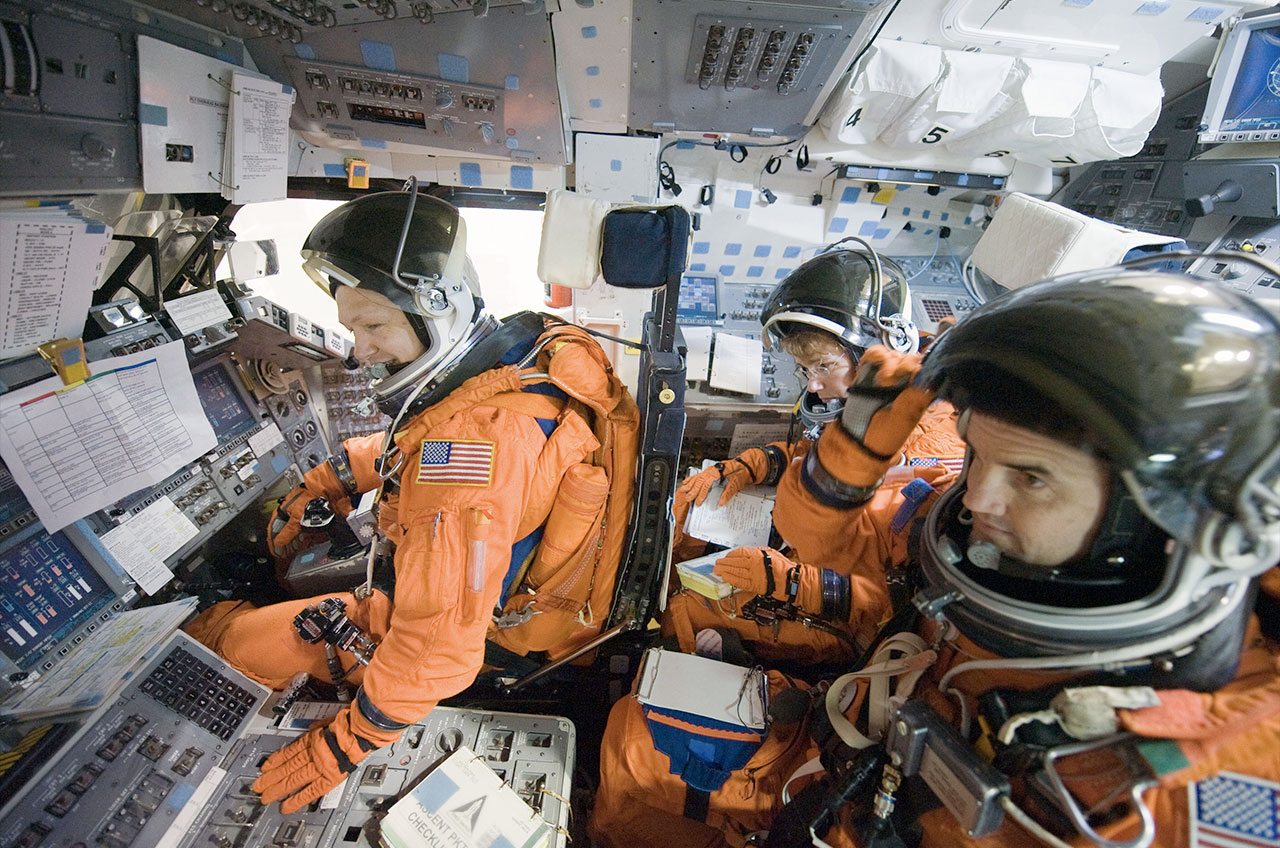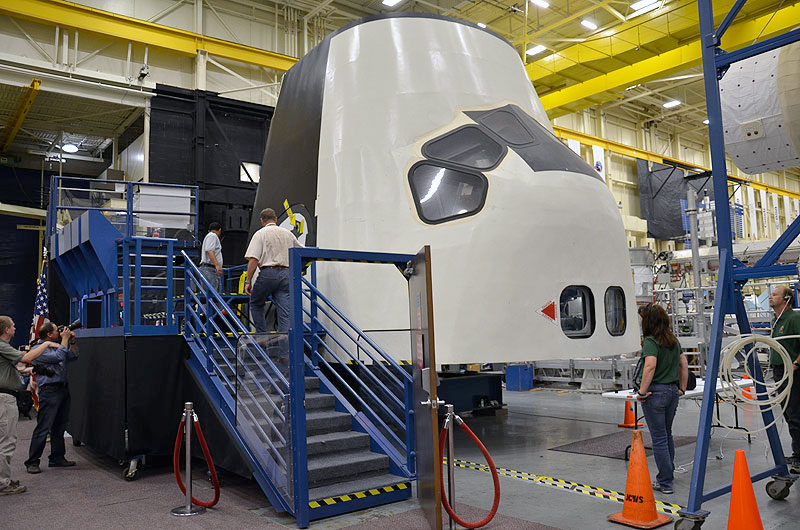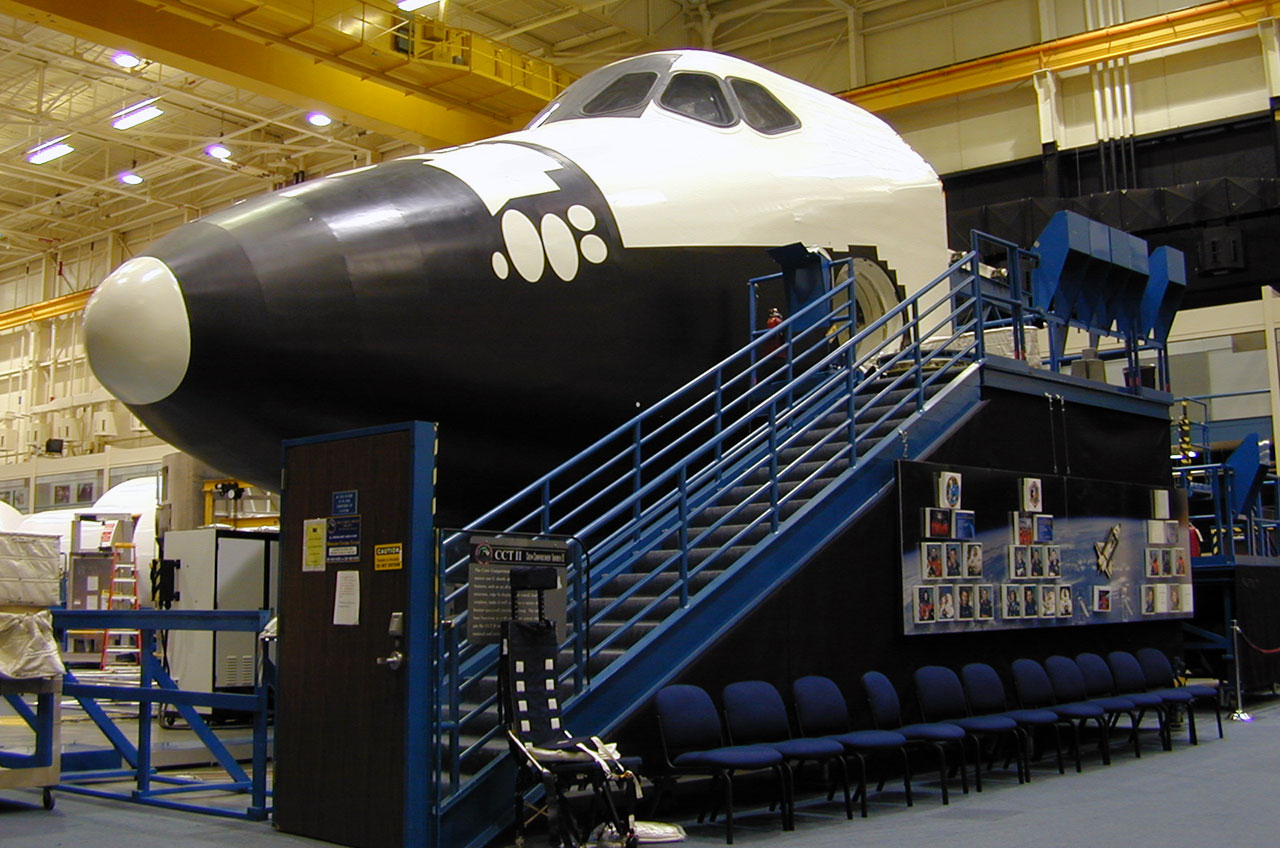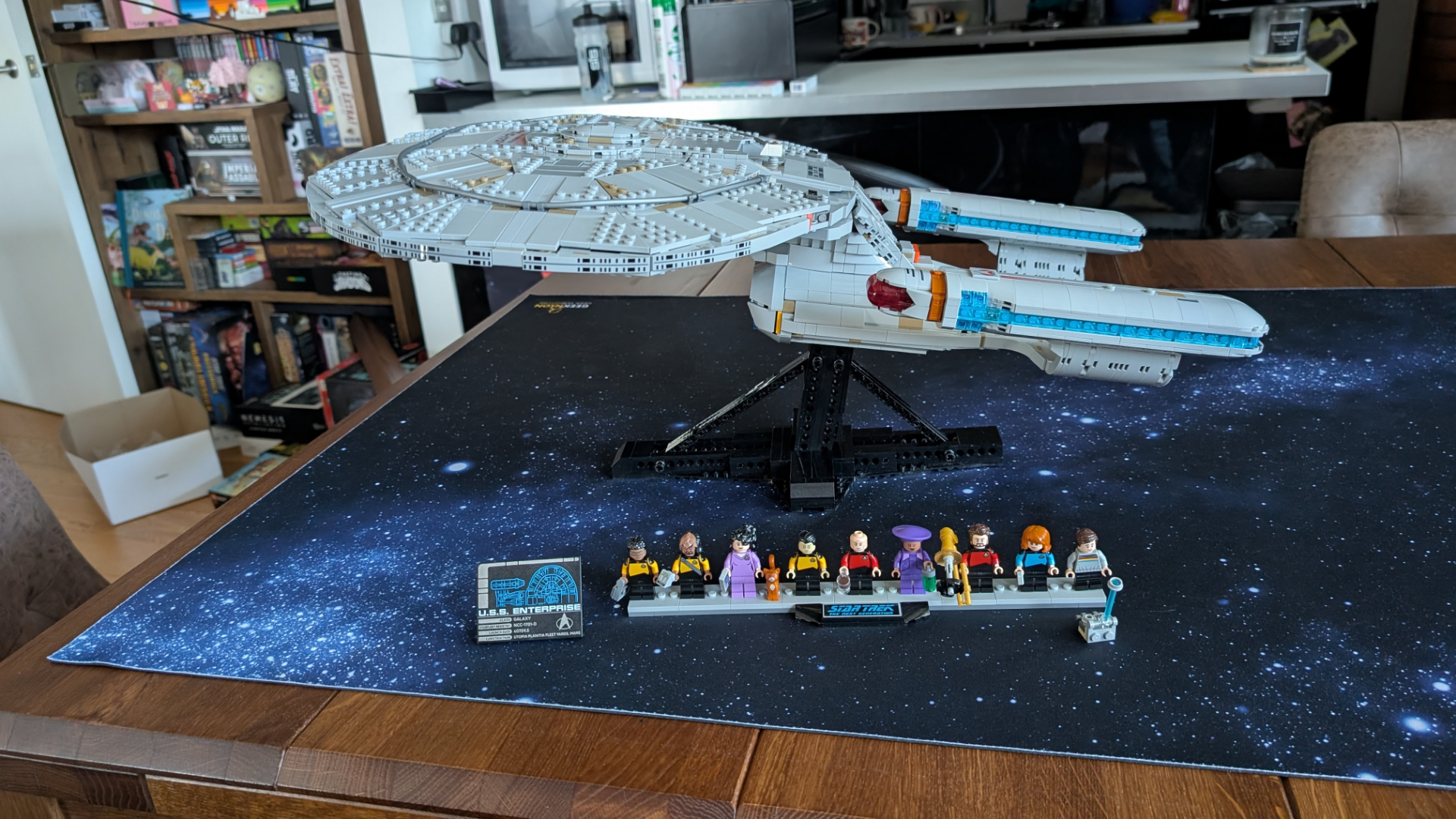Tulsa Air and Space lands last of NASA's shuttle crew cabin trainers
NASA's last space shuttle mockup still on its astronaut training room floor has landed a new educational mission in Oklahoma.
The Tulsa Air and Space Museum has announced that it will be taking possession of the full-size space shuttle Crew Compartment Trainer-2 (CCT-2) currently in the Space Vehicle Mockup Facility at NASA's Johnson Space Center in Houston, Texas. CCT-2 was last used to prepare the final crew of the space shuttle program for how to enter and exit the orbiter's cabin almost a decade ago.
"Upon doing a tour of the facilities, I saw this magnificent piece of shuttle training equipment sitting there and I started asking questions about it," said Tonya Blansett, executive director of the Tulsa Air and Space Museum & Planetarium, recalling her trip to the Johnson Space Center in 2017, when the idea to acquire the trainer originated. "It just seemed like a really perfect thing to try to bring here."
Related: NASA's space shuttle program in pictures
The second of two shuttle nose-section trainers that were used by the astronauts, CCT-2 first went into use at Johnson in 1993. Like the real shuttle orbiters' crew compartments, the trainer's cabin was outfitted with two levels — the upper flight deck cockpit and the lower mid-deck living area — but unlike a simulator, its dials and instruments were non-functional. The mockup could be tilted skyward, though, to provide crew members with the experience of working in the same orientation that their shuttle would be when on the launchpad.
As the space shuttle program was coming to an end in 2011, NASA initially offered CCT-2 to the Smithsonian. After the National Air and Space Museum passed on its display, the trainer was reserved for Johnson's own visitor center, Space Center Houston, but that exhibit plan was also set aside after a full-body mockup and 747 Shuttle Carrier Aircraft went on display.
Instead, CCT-2 remained where it had been used for 18 years, even as NASA's other shuttle mockups were sent off to museums and new spacecraft trainers were added to the training facility.
Breaking space news, the latest updates on rocket launches, skywatching events and more!
"They were not sure what they were going to do with it because the [40th] anniversary of the shuttle program is in 2021," Blansett told collectSPACE in an interview on Friday (June 26).
Although its destination is now known, when and how it will move and how it will be displayed once at the Tulsa Air and Space Museum is still to be determined. NASA told Blansett that she has until September 2021 to relocate the CCT from Johnson Space Center.
"We are in the planning phases right now," she said. "There's also going to be a fundraising component. So once we figure out what the dollar amounts are going to be for the different pieces of exhibit, then we are going to go out and raise the funds to help support that project."
NASA's first Crew Compartment Trainer (CCT-1), which was installed at Johnson in 1975, and the agency's full-body Full Fuselage Trainer (FFT), were delivered to their new museum homes — the National Museum of the U.S. Air Force in Dayton, Ohio and The Museum of Flight in Seattle, respectively — using NASA's Super Guppy aircraft in 2012. The use of the bulbous-nosed cargo plane, though, is very expensive, Blansett said.
"Since the museum's location is so very close to [Tulsa's] Port of Catoosa, we are considering using a barge method to ship it," she said. "We're only a few miles away, so that would be a really great way to utilize the resources we have here in Oklahoma with the waterway system."
Once it is in Oklahoma, the museum plans to use CCT-2 to showcase the role that Tulsa played in the construction of the space shuttles and some of its largest cargo. The winged orbiters' 60-foot-long (18-meter) payload bay doors were built by Rockwell in Tulsa and Boeing (which acquired Rockwell in 1996) assembled the truss segments launched by the shuttle for the International Space Station in the city.
The same heritage was central to the museum's 2008 bid to be awarded one of the retired flown orbiters. The "Land the Shuttle" campaign was led by the museum's then-executive director Jim Bridenstine, who today serves as NASA Administrator.
Blansett said the Crew Compartment Trainer's display may be incorporated into the museum's plans for an expanded space gallery, incorporating Apollo and Skylab artifacts from Oklahoma astronaut Bill Pogue and a new display focused on the future exploration of Mars. Overall, she said, the intention is to use CCT-2 to encourage a new generation of scientists, engineers and explorers.
"The mission of the Tulsa Air and Space museum is preserving Oklahoma's aerospace heritage to inspire science-based learning through discovery and we do that by hosting between 30,000 and 35,000 kids every year," Blansett said. "We really think that focusing the exhibit content on the CCT, we're going to celebrate the shuttle program, the connection to Tulsa and we're going to inspire children to pursue those careers."
Follow collectSPACE.com on Facebook and on Twitter at @collectSPACE. Copyright 2020 collectSPACE.com. All rights reserved.

Robert Pearlman is a space historian, journalist and the founder and editor of collectSPACE.com, a daily news publication and community devoted to space history with a particular focus on how and where space exploration intersects with pop culture. Pearlman is also a contributing writer for Space.com and co-author of "Space Stations: The Art, Science, and Reality of Working in Space” published by Smithsonian Books in 2018.
In 2009, he was inducted into the U.S. Space Camp Hall of Fame in Huntsville, Alabama. In 2021, he was honored by the American Astronautical Society with the Ordway Award for Sustained Excellence in Spaceflight History. In 2023, the National Space Club Florida Committee recognized Pearlman with the Kolcum News and Communications Award for excellence in telling the space story along the Space Coast and throughout the world.





